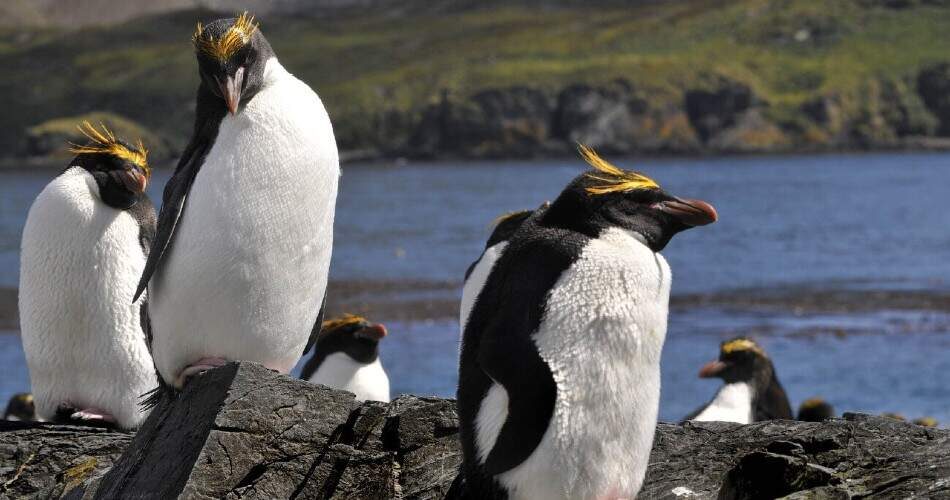Estimated reading time: 3 minutes
Depending on the scientist asked, you will find that there are between 17 and 20 species of penguins alive, most of them living in the southern part of the globe. The most northern penguins live on the Galapagos Islands, just outside Ecuador. How they resist there? Well, the climate is not very hot, but dry and moderate. Of course, the beautiful penguins have adapted to the existing temperatures.
1. Some species of penguins swim at amazing speed and can splash out of the water on an ice shelf at an equally high speed. How they manage to do this? Marine biologists have noticed that the bird releases small air bubbles from the feathers. In this way, as the bubbles are released, the friction of water with penguin plumage decreases and its speed increases considerably.
2. Most penguins swim at a speed of 7-11 kilometers per hour, while the Gentoo penguin, the fastest swimmer, can reach a speed of 37 km per hour.
3. Penguins do not wear that tuxedo to be fashionable, but because it helps them camouflage when they are in the water. Seen from above, they are one with the ocean, while seen from the bottom, the white surface on the belly fits perfectly with the light that penetrates into the water.
4. Like other birds, penguins do not have teeth. Instead, there are some fleshy ribbons on the walls of the mouth that guide the fish to the throat.
5. Penguins are carnivores. They feed on fish, squid, crab, and other seafood that they catch in the water. In summer, an average penguin will eat about 1 kilogram of meat, while in winter only a third of this amount.
6. By eating so much seafood, the penguins automatically drink a lot of salt water, which does not seem to disturb them at all. Why? Because they have adapted! The supraorbital gland, above the eyes, filters the salt so that it does not reach the blood, and it is then removed through the bill and by sneezing.
7. Another gland that allowed the penguin to adapt to the environment is the oil-producing gland. This makes them waterproof and helps them to be more slippery when jumping into the water.
8. Once a year, the penguins molt completely. Most birds molt partially, at different times of the year, but they molt only once a year, totally. Without feathers, they cannot swim and cannot get food, so before molting, they eat very much in order to resist for 2-3 weeks until their feathers reappear.
9. The mating rituals of penguins vary by species. Generally, the male attracts the female visually and through the sounds produced. To attract the attention of a female, the male builds a nest in the special nesting areas on the shore. Then, when they are ready for mating, they stand with their curved back and open wings, pulling out strong sounds and striding to attract the attention of the females. In most cases, the penguin remains with the same partner for many years or at least until the two become parents.
10. The male is in charge of incubating the egg. He stands on his feet and holds the egg under his feet, in a crease of his abdomen, which contains many blood vessels that transfer the body’s heat to the egg. While the male takes care of the babies, the female leaves to feed herself (even for two weeks), then takes the male place to incubate as he leaves to feed himself. Once the baby comes out, both parents take care of it.
If you want to find out about the largest colony of penguins in Antarctica, check out our article on this topic: The discover of the largest colony of penguins in Antarctica.
[Photo from Pixabay]
